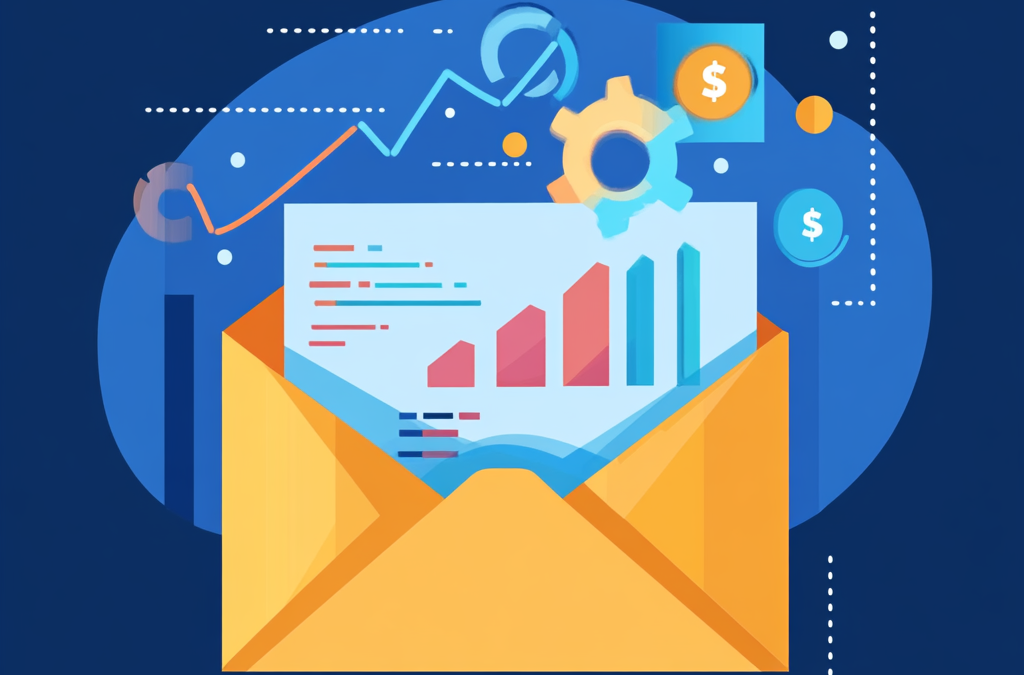We know. Email marketing is a bit like sending messages in bottles, hoping they reach the right shores. But it doesn’t have to be like that anymore. There are strategies to ensure your emails not only reach their destination but also leave a lasting impression. Think of this as your guide to turning those message-in-a-bottle moments into precision-targeted communications that captivate your audience.
What Are Email Deliverability Metrics, Anyway?
Think of deliverability metrics as your email campaign’s report card, but instead of a simple A through F grading, you’re dealing with intricate details that reveal how well your emails are performing. These metrics are the GPS for your email marketing strategy, guiding you on what’s working and what needs a tweak. Key players include:
– Bounce Rate: The percentage of emails that didn’t make it to the recipient’s inbox. And what does this mean? A high bounce rate is a sign that something’s amiss, whether it’s your email list quality or server issues.
– Open Rate: The percentage of recipients who actually opened your email. This is your first indication of whether your subject lines and timing are on point.
– Click-Through Rate (CTR): This is the percentage of recipients who clicked on a link within your email. This tells you how engaging your content is and whether your calls-to-action are compelling.
– Unsubscribe Rate: The percentage of recipients who decided they’d had enough and opted out. It’s a critical indicator of content relevance and list health.
– Spam Complaint Rate: The percentage of recipients who marked your email as spam.You need to be extra careful with this item. High rates here can damage your sender reputation and future deliverability.
Getting a first understanding of these metrics is crucial because they provide a comprehensive view of your campaign’s health and efficacy. They aren’t just numbers; they’re insights that can drive strategic decisions and optimizations. Now, let’s dig into each of these metrics:
Bounce Rate
Picture your email as a guest trying to get into an exclusive club. A high bounce rate is like being turned away at the door, signaling issues that need immediate attention. There are two types of bounces to consider:
– Hard Bounces: These are permanent rejections due to invalid email addresses. It’s like your email tried to enter a locked and abandoned building.
– Soft Bounces: These are temporary rejections caused by things like full inboxes or temporary server issues. This is similar to finding a “closed for maintenance” sign on the door.
Monitoring your bounce rate is essential because it directly affects your sender reputation. A consistently high bounce rate can lead to your emails being flagged as spam, reducing the likelihood of future emails reaching the inbox. Regularly cleaning your email list and verifying addresses can significantly reduce bounce rates.
Open Rate
Your open rate is akin to laying out the welcome mat for your emails. It reflects the first interaction recipients have with your message, influenced largely by your subject line and the timing of your send. A low open rate can stem from several factors, including unengaging subject lines, irrelevant content, or poor send timing. To boost your open rate, consider the following strategies:
– Craft Catchy Subject Lines: Your subject line is your first impression. Make it compelling, concise, and relevant. Think of it as the enticing headline that beckons readers to dive in.
– Personalization: Use the recipient’s name and tailor the content to their interests. Personalized emails are more likely to be opened because they feel more relevant to the reader.
– Mobile-Friendly Designs: Ensure your emails look great on mobile devices. A significant portion of emails is opened on smartphones, so a responsive design is crucial.
Trust us, putting in the effort here pays off big time. Who doesn’t like feeling personally addressed?
Click-Through Rate: The Engagement Score
The click-through rate (CTR) is your measure of engagement, indicating how many recipients were intrigued enough by your content to click through and take the next step. It’s like getting them to join the conversation after reading your note. To improve your CTR, focus on:
– Crafting Compelling Calls-to-Action (CTAs): Your CTA should be clear, concise, and action-oriented. Use persuasive language that encourages recipients to click.
– Providing Relevant Content: Ensure your email content aligns with the interests and needs of your audience. Valuable and relevant content increases the likelihood of engagement.
– Optimizing Your Email Design: A clean, visually appealing design can make your CTAs stand out and improve overall readability.
High CTRs are indicative of effective email content and design, showing that your messages resonate with your audience and drive them to take action.
Unsubscribe and Spam Complaint Rates: The Exit Poll
High unsubscribe and spam complaint rates are red flags that signal dissatisfaction among your recipients. Think of them as exit polls indicating where you might be going wrong. Here’s how to address these issues:
– Segment Your Email List: Sending relevant content to specific segments of your audience can reduce unsubscribe rates. Personalization based on preferences and behaviors ensures your emails are welcomed rather than discarded.
– Deliver Valuable Content: Always focus on providing value to your recipients. It’s a good idea to create content that educates, entertains, or solves a problem because that is what will keep your audience engaged.
– Comply with Spam Laws: Ensure your emails comply with regulations like CAN-SPAM. Clear opt-out options and honest subject lines can reduce spam complaints.
Monitoring these metrics helps you understand what’s driving recipients away and allows you to make necessary adjustments to keep your audience engaged and satisfied.
The Holistic View
By understanding and tracking these metrics, you can fine-tune your campaigns to ensure your emails not only reach their targets but also make a meaningful impact.
But hey, it’s not just about landing in the inbox; it’s about making your emails irresistible. So, take a holistic view, focus on delivering as well as content, and watch your email campaigns thrive.

